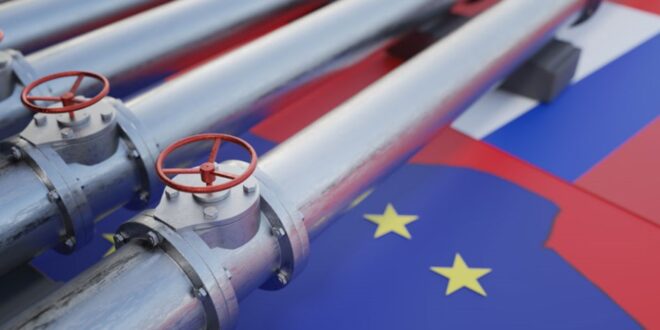For years, Egypt has been performing a tough balancing act between the West and Russia, with Cairo casting itself as an actor that both parties can lean on. Egypt was the Soviet Union’s principal ally in the Middle East during the Cold War and remains an important partner today.
Last year, Egypt allowed Moscow to use its El Hamra oil terminal on its Mediterranean coast, with the first shipment of 700,000 barrels of oil offloaded on July 24 before another vessel collected a consignment from the port just a few hours later. That was a highly controversial move because it makes the cargo’s ultimate destination much harder to track, adding to a trend whereby Russian oil shipments have become increasingly obscured since European and Western buyers began to shun them following the nation’s invasion of Ukraine.
But Egypt also maintains strong energy ties with the West, a relationship that has become more entrenched during the global energy crisis. Back in June, Egypt, the European Union, and Israel signed a memorandum of understanding (MoU) to boost natural gas exports to Europe, with the framework hailed as the first to allow Israel to export “significant” amounts of gas to Europe. And now the parties are looking to extend the deal that will maintain “relatively high volumes” of LNG deliveries to Europe. Egypt’s Petroleum Minister Tarek El Molla says the country hopes to match last year’s output when it produced about 7.5 million tonnes of LNG with 80% going to Europe.
“Now we have to solve some of the bottleneck issues. We do expect that, with the help of this MoU (memorandum of understanding), Egypt can keep the relatively high volumes of LNG that it delivered to Europe last year,” Kadri Simson, EU commissioner for energy, told Reuters.
However, it’s going to be a real slog for Europe to squeeze much more LNG from the North African nation any time soon.
Competing Interests
According to Molla, Egypt’s two liquefaction plants have plenty of spare capacity with the LNG plants currently operating at less than full capacity, “They are there prepared for the time when we make the decision to increase their capacity to double or triple,” he has told Reuters.
Unfortunately, rising domestic demand as well as infrastructure constraints limit Egypt’s ability to quickly ramp up output. Egypt has been juggling with competing interests, trying to supply more gas to its domestic market but also attempting to increase exports in a bid to ease an acute dollar shortage. Further, how much gas Egypt can actually supply to Europe will, to a large extent, depend on how much Israeli gas is delivered by pipeline to liquefaction plants on Egypt’s Mediterranean coast before being shipped to Europe. Indeed, officials have conceded that any significant expansion in export capacity will take time with existing plants needing modifications while new production chains might need to be constructed.
Europe certainly needs all the gas it can get from Egypt and elsewhere. According to Kpler data, the EU imported a total of 94.73 mt of LNG in 2022, a good 65% higher compared to the previous year. African deliveries to the bloc climbed by 2.87 mt Y/Y to 19.72 mt, with more than 80% coming from Egypt, Nigeria, and Algeria combined. Egyptian exports more than tripled while those by Nigeria and Algeria contracted. Angola also managed to more than triple its LNG supplies to Europe to 1.81 mt, while Mozambique sent its first cargoes ever to the EU in November.
That said, the United States remains Europe’s biggest gas supplier. US-only supplies to the bloc climbed by 23.59 mt Y/Y to 38.86 mt in 2022, meaning that the U.S. kept its end of the deal after agreeing with the European Commission in March to boost LNG deliveries to the bloc by at least 11.13 mt.
Interestingly, Russia surpassed Qatar to become the EU’s second biggest exporter, boosting gas deliveries to the bloc by 4.13 mt year on year to 15.12 mt. However, it’s important to note that almost all of that Russian LNG came from plants owned by independent producer Novatek. Qatar came in third after exporting 13.45 mt to the EU, good for a 1.66 mt Y/Y increase.
Supplies from Latin America increased by 1 mt year on year to 2.78 mt, with 90% sourced from Trinidad and Tobago. Asia only managed to supply under 1 mt, including LNG from Oman, the UAE, China, Indonesia, and South Korea. Meanwhile, Australian exports remained modest at 0.1 mt despite tripling Y/Y.
France was the biggest LNG importer last year, overtaking Spain despite having less import capacity. Last year, France imported a staggering 24.9 mt, more than a quarter of all EU imports and nearly double the volumes it imported in 2021. Luckily for France, the country is endowed with more pipeline connections with its neighbors than Spain, making it easier to export regasified LNG. France has become one of Germany’s top gas suppliers after the latter cut ties with Russia.

 Iran Energy News Oil, Gas, Petrochemical and Energy Field Specialized Channel
Iran Energy News Oil, Gas, Petrochemical and Energy Field Specialized Channel



